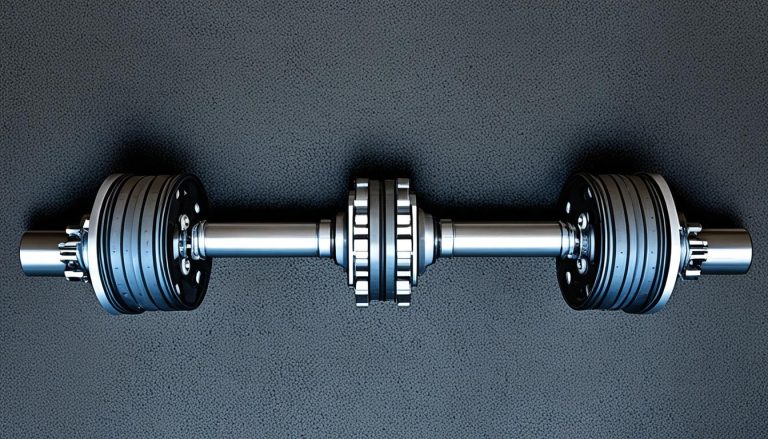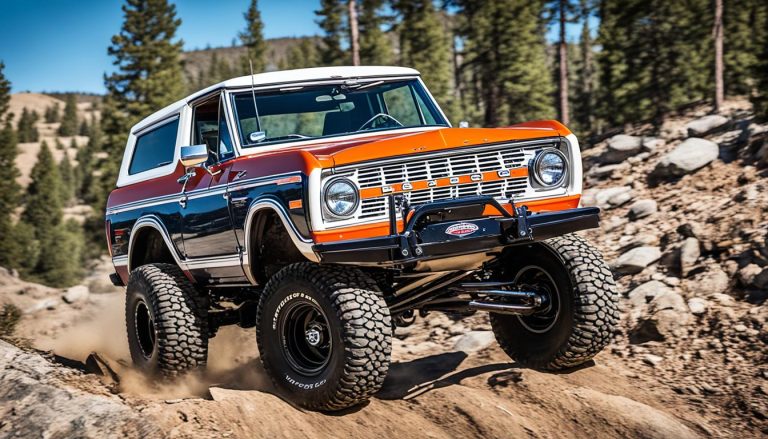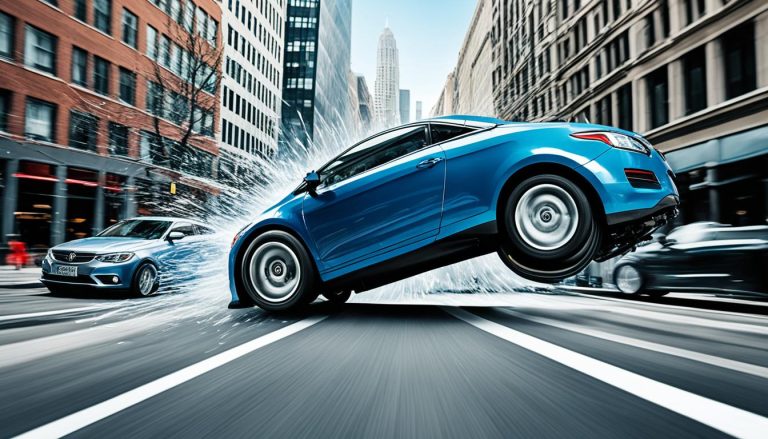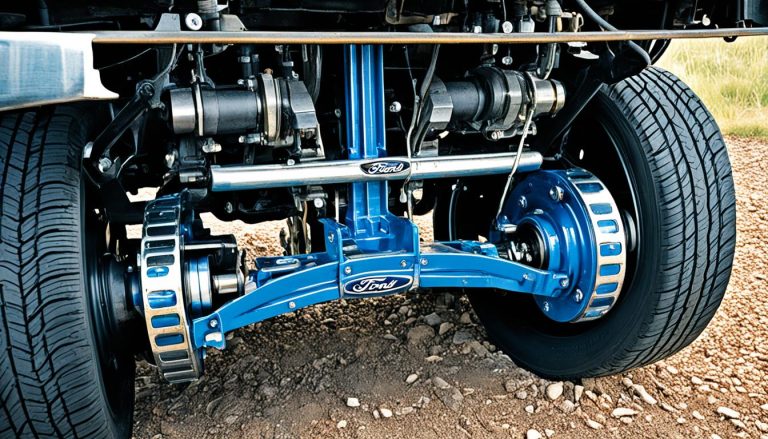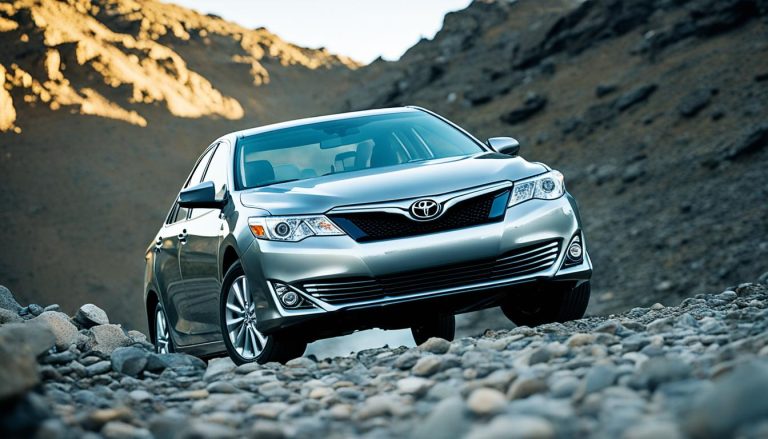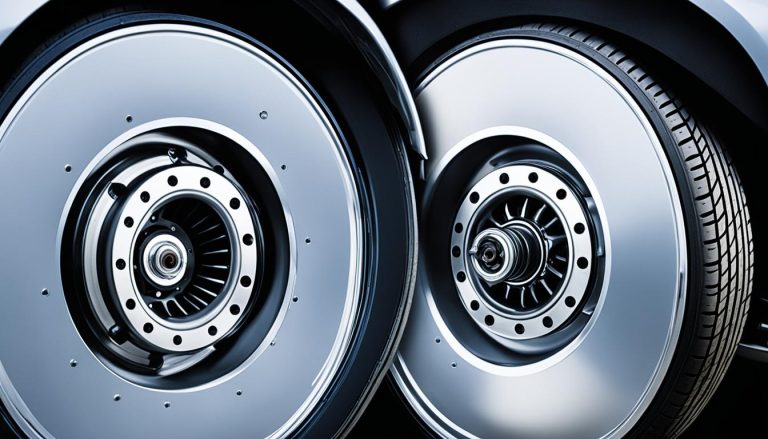Install Limited Slip on 79 Bronco Rear End Easily
Are you seeking to boost your 1979 Bronco’s performance, particularly for those off-the-path adventures? Upgrading your rear end with a limited slip differential installation can markedly enhance your Bronco’s grip on challenging terrains. Whether you’re navigating through slippery mud or clambering over rocky paths, a 79 Bronco limited slip conversion will ensure power is balanced across the wheels when you need it most.
Diving into a 1979 bronco rear end upgrade doesn’t have to be daunting. With the right knowledge and resources, you can transform your off-road driving experience while maintaining the rugged charm of your classic Bronco. Read on to grasp the essentials of this valuable modification and prepare to tackle even the toughest terrains with confidence.
Key Takeaways
- Installing a limited slip differential provides better traction for off-road conditions.
- A successful conversion not only enhances drivability but increases your Bronco’s capability over various terrains.
- Matching the correct gear ratios is crucial for a proper limited slip differential setup.
- Ensure you have all the right tools and specs ready for your 1979 Bronco’s differential overhaul.
- Seek advice and quality parts from reputable suppliers to guarantee a smooth installation process.
- Understanding the differences in differential types, like Detroit Locker vs. True Trac, will aid in selecting the best fit for your driving needs.
- Professional guidance can be invaluable, especially for a precise installation which ensures lasting performance.
Understanding the Basics of the 79 Bronco Rear End
If you’re planning on upgrading the rear end on your 1979 Bronco, it’s essential to get to grips with the underlying mechanics. The rear end is a critical component that dictates how your classic Bronco will handle, whether you’re blazing a trail off-road or cruising on the street.
Stock Gear Ratios and Differential Options
The iconic Ford Bronco of 1979 typically boasted a 9-inch rear end, capable of housing various gear ratios to suit different driving demands. You might find ratios ranging from 3.50 to a 3.25 ratio, affecting how your vehicle transfers power to the road or the dirt tracks. For those looking into 79 Bronco rear end modification, replacing the stock differential with high-performance options like a True Trac for more controlled power distribution or a robust Detroit locker for superior off-roading capability could transform your ride.
The Importance of Matching Front and Rear Gear Ratios
It’s not just about swapping parts when you’re considering a limited slip differential retrofit for your 79 Bronco; it’s also about ensuring harmony between front and rear gear ratios. This synchronization is vital for a 4-wheel drive Bronco, as mismatched ratios could lead to increased tire wear or drivetrain damage.
Below is a table that lays out popular gear ratio modifications among Bronco enthusiasts:
| Original Ratio | Modification Option 1 | Modification Option 2 | Modification Option 3 |
|---|---|---|---|
| 3.50 | 3.50 with 35-inch tires | 4.10/4.11 for off-road | 4.56 for more torque |
| 3.25 | Advised against for off-road | 4.10/4.11 for improved performance | 4.56 for aggressive power |
Choosing the right set-up is not just about enhancing off-road efficiency or accelerating low-end power; consider the impact on RPMs at highway speeds as well. Consulting with fellow Bronco owners and trusted brands in the space will likely yield the best decision for your specific needs.
Whether you’re upgrading the rear end on a 1979 Bronco for show, go, or a bit of both, grasping these fundamentals will steer your project in the right direction. Tailor your Bronco’s rear end to fit your driving style, and you’ll enjoy a ride that’s as capable as it is customized.
Choosing the Right Limited Slip Differential for Your Bronco
When looking to enhance your 1979 Bronco’s performance, specifically for off-road capabilities, installing a limited slip differential can mark the difference between a good and a great build. Your choice in a differential affects how your vehicle handles in various driving conditions. Let’s delve into the dynamics of the Detroit Locker and the True Trac, and understand which one would suit your Bronco best.
Differences Between Detroit Locker and True Trac
For a 79 Bronco rear end modification that handles rugged terrain with ease, the Detroit Locker is unmatched in its durability and engagement. It’s designed for those who demand consistent performance off-road. However, if you’re leaning towards a balance between street-ability and performance, the True Trac’s gear-driven mechanism provides a seamless transition in turns without the aggressive lock of a Detroit Locker. While selecting, consider how each type complements your driving habits — be it urban cruising or trail conquering.
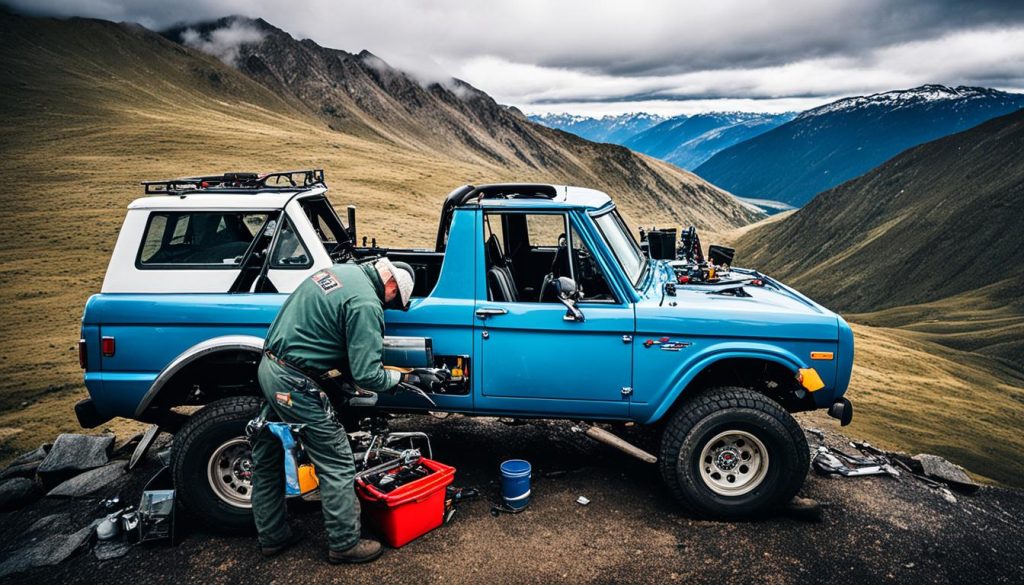
Identifying Your Axle Specifications
Before installing a limited slip differential on your 79 Bronco, you must ascertain your vehicle’s axle specifications. This crucial step ensures the component you choose is compatible with your Bronc’s setup. Count the teeth on your ring and pinion gears to establish your gear ratio. Checking the spline count on your axles is equally important to prevent any unpleasant surprises during installation. Vendors like Quick Performance are invaluable resources when seeking pre-assembled units with specifications that align with your Bronco’s axle.
- Monitor gear ratios for improved performance and fuel economy
- Check spline count for proper differential fitment
- Consider pre-assembled options for stress-free installations
- Seek renowned brands for quality assurance
Sifting through the aspects of a limited slip differential installation can be daunting. Yet, with the right information and a clear understanding of the distinctions between differential types like the Detroit Locker and True Trac, as well as identifying your Bronco’s axle specs, you’re well on your way to boosting its traction and handling, ready to tackle any adventure on or off the road.
Preparations for Installing a Limited Slip Differential
Gearing up to enhance your 1979 Bronco’s off-road performance with a limited slip conversion? Smart move. The allure of improving traction on your 1979 Bronco is not just about getting an edge on slippery terrains; it’s also a worthwhile investment in your beloved rig’s longevity. To ensure a smooth transition and optimal results in your 79 Bronco rear end modification, let’s take a dive into the preliminary checklist you’ll need to tackle.
Gathering Necessary Tools and Equipment
Integrating a limited slip differential into your 79 Bronco won’t be your average weekend tinkering. You will need a set of specialized tools to embark on the 79 Bronco limited slip conversion. Here’s a quick rundown of the utensils you’ll require:
- Differential rebuild kit
- Quality gear oil matching specifications
- Professional-grade bearing press
- Accurate dial indicator for backlash measurements
The importance of consulting with seasoned professionals cannot be overstated. Companies like Quick Performance are not only vendors; they’re treasure troves of wisdom when it comes to gearing up for a successful modification.
Assessing the Condition of Existing Differential Components
Before embarking on the task of how to add a limited slip 79 Bronco rear end, inspecting the condition of your current setup is crucial. Here’s a guide for what to look for:

| Component | What to Check | Notes |
|---|---|---|
| Rear End Gear Ratio | Count teeth of ring and pinion gear | Confirm match with limited slip specs |
| Axle Splines | Inspect number of splines | Ensure compatibility with new differential |
| Wear and Damage | Look for unusual wear patterns or damage | May indicate need for additional repairs |
A visual and manual inspection can reveal critical wear or potential issues. Considerations should extend to enhanced components such as Nodular cases and Daytona Pinion Supports for a more robust assembly, especially when upgrading to high-performance parts.
With the right tools in hand and a clear understanding of your Bronco’s rear end conditions, you’re on your way to successfully adding a limited slip differential and significantly enhancing your ride’s capabilities.
How to Add Limited Slip 79 Bronco Rear End
Upgrading your 1979 Bronco with a limited slip differential retrofit is a savvy move to enhance your vehicle’s performance on varying terrains. Quick Performance is renowned for providing comprehensive solutions, including pre-assembled third members that are compatible with your Bronco’s specifications. Here’s a streamlined guide to how to add limited slip to your 79 Bronco rear end, ensuring you gain that extra edge on your off-roading adventures.
- First, carefully remove your current differential carrier to make space for the new unit.
- Select a fitting limited-slip differential—you’re aiming for one that’s aligned with your tire size to maintain warranty validity.
- Install the fresh ring and pinion, making certain they mesh well to transmit power smoothly.
- Meticulously adjust gear backlash to the manufacturer’s specified setting for optimal performance.
Consider opting for a 31-spline Truetrac differential, which is a stellar choice for your Bronco, offering enhanced durability and improved traction control. This investment not only brings peace of mind but also prepares your Bronco to tackle more arduous environments with poise. As you plan this upgrade, remember that efficient installation leads to countless miles of confident driving.
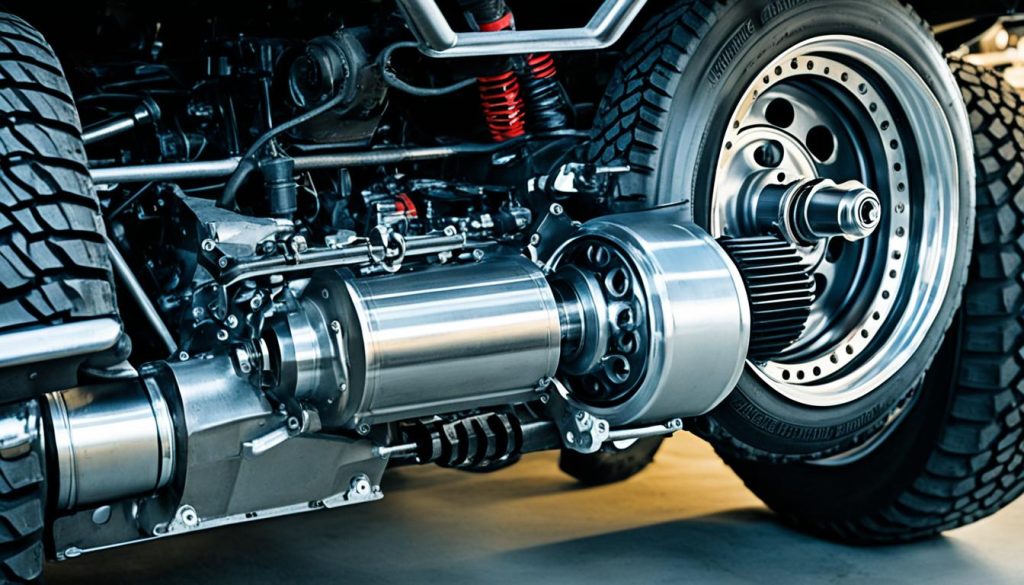
Each step in the process is vital to ensure the longevity and efficiency of your new limited slip rear end. If you’re not entirely comfortable with the installation process, seeking professional assistance is advisable. Upgraded differentials can have a significant impact on your vehicle’s handling and capability, so it’s critical that they are installed correctly.
By following these guidelines, the limited slip differential retrofit for your ’79 Bronco will be a smooth and successful enhancement, leaving you ready for any adventure ahead. Happy trails to you and your newly upgraded Bronco!
Step-by-Step Installation Guide for Limited Slip Differential
If you’re looking to enhance your 1979 Bronco’s performance with better traction and handling, installing a limited slip differential is a solid upgrade worth considering. This upgrade, ideal for those yearning to improve their 79 Bronco rear end, requires some mechanical know-how but can be tackled with due care and the right approach. Let’s guide you through a seamless transformation for your classic 4×4.
Removing the Old Differential
The first phase in your 79 Bronco limited slip conversion involves carefully removing the old differential. You’ll want to start by unbolting the third member from the axle assembly. Remember to keep track of all the shims as they will be important when installing your new differential. All old bearings, seals, and gears need to be removed which can be a meticulous process. For a clear understanding of each step, resources like Broncograveyard.com can be invaluable—it’s all about precision and patience here.
Installing the New Limited Slip Differential
Following the removal of your old differential, the installation of your new limited slip differential calls for an equally meticulous approach. The fresh differential carrier must be fit into the axle housing, a step wherein precision can’t be overstated. Setting up the new ring and pinion gears then follows, with backlash and bearing preloads needing accurate adjustment. If you require more hands-on assistance, reaching out to a professional or referring to specific online tutorials can ease the process and ensure your limited slip differential installation leads to successful off-roading adventures. Embrace this upgrade and your Bronco’s rear end will be more capable than ever, whether you’re crawling over rocks or cruising down the highway.
FAQ
What are the benefits of upgrading my 1979 Bronco with a limited slip differential?
Installing a limited slip differential improves traction and power distribution on slippery surfaces and uneven terrain, which is especially beneficial during off-roading adventures.
What rear end gear ratios came stock with the 1979 Bronco?
The typical stock gear ratios for a 1979 Ford Bronco ranged from 3.50, documented by Marti statistics, to a reported 3.25 ratio (39 ring gear teeth to 12 pinion teeth).
Why is it important to match my 79 Bronco’s front and rear gear ratios?
Matching front and rear gear ratios is critical in 4WD vehicles like the 1979 Bronco to maintain drivability and prevent wheel slip or drivetrain bind when engaging 4-wheel drive.
What are the differences between a Detroit Locker and a True Trac differential?
A Detroit Locker is a more rugged, constantly engaged locking differential ideal for severe off-road use, but it may cause ‘sloppy’ steering on-road. The True Trac, on the other hand, is gear-driven and clutchless, making it smoother and more suitable for on-road driving and easier cornering.
How can I identify the axle specifications for my 1979 Bronco?
To determine the axle specifications, you’ll need to count the teeth on the ring and pinion gears to figure out your gear ratio and check the spline count on the axles to ensure compatibility with a new limited slip differential.
What tools and equipment are necessary for installing a limited slip differential on my ’79 Bronco?
You’ll need tools such as bearing presses and dial indicators to set backlash, along with a differential rebuild kit and the correct gear oil. Consulting with professionals for guidance on the right tools can be very helpful.
How should I assess the condition of my Bronco’s existing differential components?
Before installing a limited slip differential, inspect the existing components for wear or damage. Count the axle splines and confirm the gear ratio, and consider upgrading to stronger components where required.
Can I install a limited slip differential on my Bronco without professional assistance?
Yes, it’s possible to install a limited slip differential yourself, but precision is key. If you’re not experienced with such installations, it’s recommended to seek direct technical support or consult online guides and videos provided by established vendors.
What should I do to prepare for removing the old differential from my ’79 Bronco?
For removal, you’ll need to unbolt the third member from the axle assembly, carefully count and set aside any shims, and ensure that all old bearings, seals, and gears are removed in accordance with the installation guidelines.
What steps are involved in installing a new limited slip differential in my 1979 Bronco?
The installation process includes setting the new differential carrier into the axle housing, installing new ring and pinion gears, and then accurately adjusting the backlash and bearing preloads. It involves meticulous work or you might want to consider a pre-assembled third member for easier installation.

